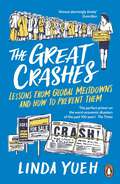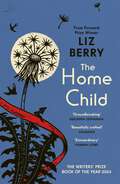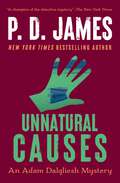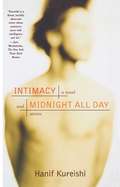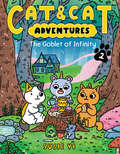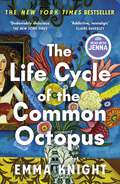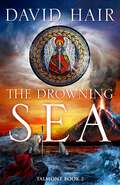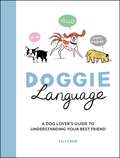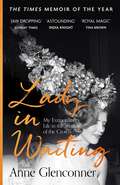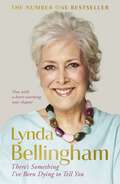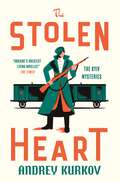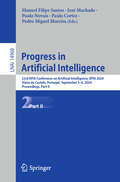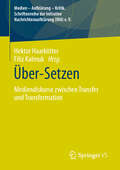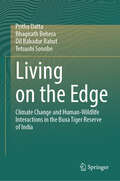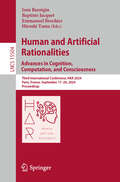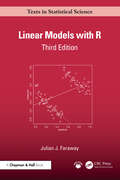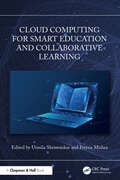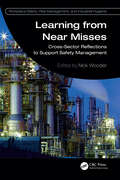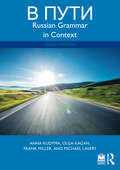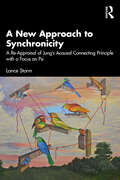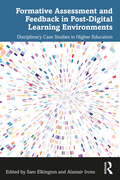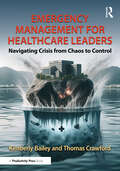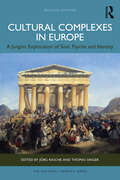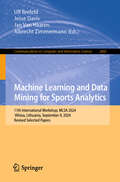- Table View
- List View
The Great Crashes: Lessons from Global Meltdowns and How to Prevent Them
by Linda Yueh'A masterclass in spotting the early signs of a crisis' Nouriel Roubini'This is the historical perspective we need' John Kay'A first point of entry for anybody who wants to learn how the world sleep-walked into multiple crashes' Daron Acemoglu'Fascinating, well-written and authoritative' Tim Harford-----------------------------------------------------------------The global economy has weathered the most tumultuous century in modern financial history. Since America's Wall Street Crash of 1929, the global economy has weathered the most tumultuous century in financial history. From the currency crises of the 1980s, to Japan's housing meltdown, the dot com boom and bust, the global financial crash and the COVID pandemic, crash after crash has sent shockwaves through our world.The Great Crashes tells the stories of ten of these historic financial events. They serve as a series of cautionary tales, each with their own lessons to be learnt. With clear-eyed analysis, renowned economist Professor Linda Yueh uses these meltdowns to extract a critical three-step framework to help recognise the early signs of a crash, mitigate the effects and even prevent them in the future. There is very little that is certain in economics, except for this: there will be another financial crisis.Combining her in-depth knowledge with compelling storytelling, The Great Crashes is essential reading that offers urgent lessons for the modern world.-----------------------------------------------------------------'An important contribution that can help society anticipate and tackle potential crashes in the future' Christine Lagarde
The Home Child: from the Forward Prize-winning author of Black Country
by Liz Berry*WINNER OF THE WRITERS' PRIZE - BOOK OF THE YEAR*Inspired by a true story, The Home Child is a beautiful novel-in-verse about a child far from home‘Ground-breaking’ Benjamin Zephaniah‘Beautifully crafted’ Guardian‘Extraordinary’ Hannah LoweIn 1908, Eliza Showell, twelve years old and newly orphaned, boards a ship that will carry her from the slums of the Black Country to rural Nova Scotia. She will never return or see her family again.With nothing to call her own, the wild beauty of her surroundings is the only solace Eliza has – until another Home Child, a boy, arrives at the farm and changes everything.Inspired by the true story of Liz Berry’s great aunt, this spellbinding novel in verse is an exquisite portrait of a girl far from home.‘One of the outstanding books of this year. Although this is a historical tale its resonance is timeless’ Sunday Times‘Deeply moving. A graceful, delicate book, stunning in its emotional depth... I know I'll return to it many times in the future’ Megan Hunter, author of The End We Start From
Unnatural Causes: Cover Her Face, A Mind To Murder, Unnatural Causes, Shroud For A Nightingale, The Black Tower, And Death Of An Expert Witness (Adam Dalgliesh Mystery #3)
by P.D. JamesThe third installment in the classic Adam Dalgliesh mystery series, Unnnatural Causes is another must-read page-turner from bestselling author P.D. James, &“the reigning mistress of murder&” (Time). Dalgliesh is also a streaming series starring Bertie Carvel—now in its third season! Maurice Seton was a famous mystery writer—but no murder he ever invented was more grisly than his own death. When his corpse is found in a drifting dinghy with both hands chopped off at the wrists, ripples of horror spread among his bizarre circle of friends. Now it’s up to brilliant Scotland Yard inspector, Adam Dalgliesh, and his extraordinary aunt to uncover the shocking truth behind the writer’s death sentence, before the plot takes another murderous turn. Unnatural Causes inspired Cosmopolitan to fervently hope, “if we’re lucky, there will always be an England and there will always be a P.D. James.”
Intimacy and Midnight All Day: A Novel and Stories
by Hanif KureishiTogether in one volume—Hanif Kureishi's highly acclaimed and controversial novel, Intimacy, and his collection of provocative short stories, Midnight All Day.Jay, the narrator of Intimacy, tells his story on the night he is preparing to leave his lover, Susan, and their two boys. Stripping away all posturing and self-justification, Hanif Kureishi explores the fears and desires that drive a man to leave a woman. Midnight All Day is an astonishing, darkly comic collection of new stories, in which Kureishi confirms his reputation as one of our foremost chroniclers of the loveless, the lost and the dispossessed. The characters are familiar in the cultural landscape of the nineties: frustrated and intoxicated, melancholic and sensitive, yet capable of great cruelty, and if necessary, willing to break the constraints of an old life to make way for the new.
Cat & Cat Adventures: The Goblet of Infinity (Cat & Cat Adventures #2)
by Susie YiCats, magical portals, and snacks, oh my!Squash and Ginny’s journey continues as they search for the Goblet of Infinity, a treasure that creates a never-ending supply of delicious drinks! But when the cats arrive at the goblet’s hiding place, the treasure is nowhere to be found. Instead, the cats meet a unibear named Fern who is convinced that the evil Dragon Witch has stolen the goblet.But as Squash and Ginny try to get to the bottom of the mystery, they begin to see that not everything (or everyone) is exactly as they seem. . . .This chapter book graphic novel series from Susie Yi is perfect for fans of Catstronauts, Babymouse, and Catwad!Praise for Cat & Cat Adventures: The Quest for SnacksA Junior Library Guild Selection"Lovers of cuteness will delight in this adorable kitty adventure." —Jim Benton, author of the Catwad series“Look no further for PAWSSIBLY the sweetest book on the shelf!” —Ben Clanton, bestselling author of the Narwhal and Jelly series“A story to treasure, full of kindness in a magical world.” —Kirkus Reviews
The Ones We Loved: A Novel
by Tarisai NganguraThe Ones We Loved has descriptive copy which is not yet available from the Publisher.
The Life Cycle of the Common Octopus: a witty and charming novel of friendship, family and first love
by Emma Knight*THE NEW YORK TIMES BESTSELLER*'A spellbinding debut about friendship, motherhood, first love, and the choices that bind us' CARLEY FORTUNE'Addictive, nostalgic and comforting, this layered family mystery crept round my heart' CLAIRE DAVERLEYPen and Alice, childhood best friends from Toronto, are in their first year at the University of Edinburgh. Each has come to the city for her own reasons.Pen knows her divorced parents back in Canada are hiding something from her. She believes she'll find the answer here in Scotland, where an old friend of her father's - now a famous writer known as Lord Lennox - lives. When she is invited to spend the weekend at Lennox's centuries-old estate with his enveloping, fascinating family, Pen begins to unravel her parents' secret, just as she's falling in love for the first time . . .Meanwhile Alice, an aspiring actor, sees university as her route to the West End and beyond. The star of this year's theatre production, she's making the most of the power she wields as an object of desire - until an affair with her tutor begins to slip from her control. Witty, warm and wildly unputdownable, The Life Cycle of the Common Octopus is at once a love story and an irresistible mystery, a celebration of female friendship, and a study of how looking back can help us move forward.'A book to lose yourself in' FRAN LITTLEWOOD'Brimming with heart' JENNY JACKSON'Luminous . . . as smart as it is delicious, as nostalgic as it feels fresh' ASHLEY AUDRAIN'Joyous, clever, and wholly transportive' KATY HAYS'Emma Knight's witty, wistful debut will keep you up all night' JOANNA RAKOFF
The Drowning Sea: The Talmont Trilogy Book 2 (The Talmont Trilogy #2)
by David HairThe Falcons have become the empire's enemy in THE DROWNING SEA, the unmissable sequel to THE BURNING LANDSRomara Challys and her Falcons are Vestal Knights, who have shed blood to uphold the Triple Empire against the destructive Vyr Rebellion. But now, the Falcons have become the empire's enemy.Having learned that elobyne, the magical crystal that empowers the knights, is catastrophically destructive, the Falcons vow to save their world. But speaking truth to power is perilous, and Romara is the empire's prisoner, facing torture and death at the hands of her former masters. Her comrades, big-hearted Gram, the prodigy Soren, and the erling mage Elindhu, are seeking her rescue, but the forces arrayed against them seem insurmountable.Meanwhile, her loyal second, Jadyn, and the mercurial thief Aura, are seeking the aegis, an alternative magic, following a path laid down centuries before. But hunting them are Vazi Virago, the Order's Exemplar, and the fearsome lictor, Yoryn Borghart; who want the aegis for their own devious ends.The seas are rising, harvests are failing, refugees flooding across borders are sparking wars, and the destructive rebellion threatens civilisation. The End of All Things is coming, the priests and seers say. Coros is doomed.If the Falcons can't save their world, who can?'Full of nuanced, loveable characters whose complex relationships with each other and with themselves make The Burning Land a compulsively readable adventure not to be missed!' Sebastien de Castell, author of The Malevolent Seven
Doggie Language: A Dog Lover's Guide to Understanding Your Best Friend
by Lili ChinDogs communicate with so much more than barks and tail wags. This small but mighty book is the perfect illustrated guide to noticing and understanding the subtle cues and behaviours that our beloved pets use to express how they’re feeling, so that we can improve our relationship with our best friends, helping them to feel safe and happy.
Lady in Waiting: The charming, word-of-mouth bestseller, with over 500,000 copies sold
by Anne Glenconner**OVER HALF A MILLION COPIES SOLD****A TIMES MEMOIR OF THE YEAR **'The best royal book by miles . . . funny, gossipy and riveting'JANE RIDLEY, SPECTATOR'If your jaw doesn't drop at least three times every chapter, you've not been paying proper attention'SUNDAY TIMESA Maid of Honour at the Queen's Coronation and former Lady in Waiting to Princess Margaret, Anne Glenconner has spent her life as a friend of the royal family. In this bestselling memoir, she looks back on an extraordinary life full of glamour, drama and tragedy.The eldest child of the 5th Earl of Leicester, Anne knew as a daughter she would not inherit the family fortune and was instead brought up to secure an eligible husband. Her marriage to the charismatic Colin Tennant - later Lord Glenconner - would prove a test of every strength she possessed, while her friendship with Princess Margaret, which began in childhood, grew ever closer.From the tragic loss of two of her grown-up sons to the cruel surprise of her late husband's final will, Lady in Waiting is Anne Glenconner's remarkable testament to the resilience and humour that define her as she emerges from the shadow of her husband and the crown, reminding us that all that glitters is not gold.'A captivating account of a life lived with resilience and grace'DAILY MAIL'The stoical Lady G writes with infectious joy and optimism'DAILY EXPRESS'The gossip is stupendous but it's also tremendously touching. It's one of those books that makes you long for bed so you can read more!'JILLY COOPER'I can't recommend it highly enough'LORRAINE KELLY'Gentle, wise, unpretentious, but above all inspiring'THE TIMES'A candid, witty and stylish memoir'MIRANDA SEYMOUR, FINANCIAL TIMES'Stalwart and disarmingly honest . . . emotion resonates through this delightful memoir'THE WALL STREET JOURNAL'Discretion and honour emerge as the hallmarks of Glenconner's career as a royal servant, culminating in this book which manages to be both candid and kind'GUARDIAN'I couldn't put it down. Funny and touching - like looking through a keyhole at a lost world.'RUPERT EVERETT
There's Something I've Been Dying to Tell You: The uplifting bestseller
by Lynda BellinghamBy turns, it is riotous, deeply serious, practical and sad. Reading it is like being at her kitchen table with a glass of wine to hand. (Daily Telegraph)Lynda Bellingham was a tremendously gifted storyteller with a rich collection of tales of love, loss and laughter and this memoir brings her kind heart, courage and emotion to the page in vivid detail. There's Something I've Been Dying To Tell You is a brave memoir about Lynda's battle with cancer, facing death she found joy and shared it with millions. Her story is an affecting and at times heart-breaking one but it is so often laugh-out-loud too and ultimately the way Lynda told her life story serves as a great inspiration to us all. Woven into this very moving and brave story are extraordinary, colourful tales of her acting and family life that will enlighten and entertain as well as the journey that Lynda has taken to find the family of her birth father having already suffered heartache in her search for her birth mother. In the search for her father's family, Lynda finds a family with a history in entertainment showing that acting was always in the blood.This book was written in Lynda's final months and revealed for the first time, and in great detail, her fight with cancer and how her life was transformed since her diagnosis. This edition includes a brand new chapter written by Lynda's husband Michael about his love for her, her love of life and her glorious final send-off.
The Stolen Heart: The Kyiv Mysteries (The Kyiv Mysteries #2)
by Andrey KurkovSamson Kolechko has been assigned a most perplexing case - though it is mostly perplexing because it's hard to understand why selling the meat of one's own pig constitutes a crime. But apparently it does, and at the insistence of the Chekist secret police officer assigned to "reinforce" the Lybid police station, Samson does his diligent - if diffident - best.Yet no sooner has he got started than his live-in fiancée Nadezhda is abducted by striking railway workers who object to the census she's carrying out. And when you factor in a mysterious thief in the police station itself, a deadly tram accident that may have been pre-meditated, and the potential reappearance of the culprit in the case of the silver bone, it's no wonder the "meat case" takes a back seat.But it is in the pursuit of that petty-fogging, seemingly mundane matter that Samson's fate lies - and Nadezhda's too, for the two are inextricably entwined.Translated from the Russian by Boris DralyukReviews for The Silver Bone - Longlisted for the International Booker Prize"Andrey Kurkov is often called Ukraine's greatest living writer, and it is a gift for crime fiction fans that he writes in this genre" New York Times"Wildly enjoyable . . . A glorious aural portrait of a city in dangerous flux . . . I finished The Silver Bone wishing to read more" Guardian
Progress in Artificial Intelligence: 23rd EPIA Conference on Artificial Intelligence, EPIA 2024, Viana do Castelo, Portugal, September 3–6, 2024, Proceedings, Part II (Lecture Notes in Computer Science #14968)
by Paulo Cortez Paulo Novais José Machado Manuel Filipe Santos Pedro Miguel MoreiraThe 3-volume set LNAI 14967, 14968, and 14969 constitutes the proceedings of the 23rd EPIA Conference on Artificial Intelligence, EPIA 2024, held in Viana do Castelo, Portugal, during September 3–6, 2024. The 94 full papers presented in these proceedings were carefully reviewed and selected from 187 submissions. The papers are organized in the following topical sections: Volume I: AI and Creativity (AIC); Ambient Intelligence and Affective Environments (AmIA); Artificial Intelligence and IoT in Agriculture (AIoTA); Artificial Intelligence and Law (AIL); and Artificial Intelligence for Industry and Societies (AI4IS). Volume II: Artificial Intelligence in Medicine (AIM); Artificial Intelligence in Power and Energy Systems (AIPES); Artificial Intelligence in Transportation Systems (AITS); Ethics and Responsibility in AI (ERAI); and General AI (GAI). Volume III: Generative AI – Foundations and Applications (GenAI); Intelligent Robotics (IROBOT); Knowledge Discovery and Business Intelligence (KDBI); Natural Language Processing, Text Mining and Applications (TeMA); and Data-Centric AI – Solutions and Emerging Technologies (DCenAI).
Über-Setzen: Mediendiskurse zwischen Transfer und Transformation (Medien – Aufklärung – Kritik. Schriftenreihe der Initiative Nachrichtenaufklärung (INA) e.V.)
by Hektor Haarkötter Filiz KalmukDie Beiträge in diesem Band wollen einerseits die kritische Auseinandersetzung mit dem Übersetzungsbegriff (und verwandten Konzepten) anregen, andererseits sollen Untersuchungen in den Mittelpunkt gestellt werden, die sich vertiefend mit einzelnen Aspekten von Transfer und Transformation in (digitalen) Mediendiskursen befassen.
Living on the Edge: Climate Change and Human-Wildlife Interactions in the Buxa Tiger Reserve of India
by Tetsushi Sonobe Pritha Datta Bhagirath Behera Dil Bahadur RahutIn a rapidly changing climate, understanding the complex interactions between humans and wildlife is crucial for fostering coexistence. This book offers an in-depth analysis of how climate change exacerbates conflicts between local communities and wildlife in the Buxa Tiger Reserve. Through historical insights, current challenges, and community narratives, it reveals the adaptive strategies employed by villagers and their unintended consequences on wildlife. Readers will gain valuable insights into the cascading effects of these conflicts and find evidence-based policy recommendations aimed at promoting sustainable and harmonious coexistence. Essential for conservationists, policymakers, and anyone interested in sustainable development, this book provides practical solutions for mitigating human-wildlife conflicts in the face of climate change.
Human and Artificial Rationalities. Advances in Cognition, Computation, and Consciousness: Third International Conference, HAR 2024, Paris, France, September 17–20, 2024, Proceedings (Lecture Notes in Computer Science #15504)
by Jean Baratgin Baptiste Jacquet Hiroshi Yama Emmanuel BrochierThis book constitutes the proceedings of the Third International Conference on Human and Artificial Rationalities, HAR 2024, which took place in Paris, France, in September 2024. The 19 full papers and 4 short papers included in this book were carefully reviewed and selected from 52 submissions. They are organized under the following topical sections: Artificial reasoning and models; Moral reasoning; Artificial intelligence and cognition; Rationality and Dual Process; Reasoning and special needs; Education; Experimental procedures in cognition. * This book also contains one additional paper from the HAR 2023 conference.
Linear Models with R (Chapman & Hall/CRC Texts in Statistical Science)
by Julian J. FarawayA Hands-On Way to Learning Data AnalysisPart of the core of statistics, linear models are used to make predictions and explain the relationship between the response and the predictors. Understanding linear models is crucial to a broader competence in the practice of statistics. Linear Models with R, Third Edition explains how to use linear models in physical science, engineering, social science, and business applications. The book incorporates several improvements that reflect how the world of R has greatly expanded since the publication of the second edition.New to the Third Edition 40% more content with more explanation and examples throughout New chapter on sampling featuring simulation-based methods Model assessment methods discussed Explanation chapter expanded to include introductory ideas about causation Model interpretation in the presence of transformation Crossvalidation for model selection Chapter on regularization now includes the elastic net More on multiple comparisons and the use of marginal means Discussion of design and power Like its widely praised, best-selling predecessor, this edition combines statistics and R to seamlessly give a coherent exposition of the practice of linear modeling. The text offers up-to-date insight on essential data analysis topics, from estimation, inference, and prediction to missing data, factorial models, and block designs. Numerous examples illustrate how to apply the different methods using R.
Cloud Computing for Smart Education and Collaborative Learning
by Urmila Shrawankar Prerna MishraThe book presents next-generation education technology and the pedagogy of the Education Cloud. It covers technological developments, case studies, innovative research approaches, and solutions for advanced learning paradigms using Internet of Things (IoT), cloud computing, and machine learning to handle various challenges of the smart education system. It discusses cloud architecture, management, and frame- work for education from virtual classrooms and labs. It shows how cloud computing framework can be integrated with fog computing, edge computing, deep learning, and IoT. Illustrates from fundamental theories to practical and sophisticated applications of cloud technology for the education domain Explores e-learning applications through location-independent cloud services to reduce cost Covers result-oriented, real-time solutions for smart, accessible education and its real-time application support Discusses accessible cloud services for people with special needs Presents flexible and scalable cost-effective e-learning architecture and scenario for education technology It serves as a valuable resource for academicians, researchers, and professionals interested in smart education and cloud technology.
Learning from Near Misses: Cross-Sector Reflections to Support Safety Management (Workplace Safety, Risk Management, and Industrial Hygiene)
by Nick WoodierLearning from Near Misses can provide opportunities to improve safety without the need for harm to have first occurred. Near misses are ‘free lessons’ which are high volume and rich in value. However, some sectors are yet to embrace learning from near misses to improve the effectiveness and safety of their operations. This book explores how near misses contribute to safety management across a range of high-risk sectors and shares lessons to help organisations, industries and sectors utilise learning from near misses in line with contemporary safety theory.This title discusses how the management of near misses has developed in the past 30 years since early clarification of the concept. It defines the ‘near miss’ and describes its unique features in relation to controls while debating relevant safety science and how different perspectives (e.g., Safety I and Safety II) can help extract valuable learning from near misses to improve safety. Case studies reveal how near misses are managed and learnt from across a range of sectors. The reader will learn to acknowledge and appreciate the complexities of near misses in modern systems and recognise the considerations that are required to extract learning from them.An ideal and essential read for safety practitioners, consultants and academics, this book is also suitable for those working in safety management in high-risk and highly regulated sectors.
V Puti: Russian Grammar in Context
by Anna Kudyma Olga Kagan Frank Miller Michael LaveryV Puti: Russian Grammar in Context is a multi-level textbook program for learners of Russian that develops proficiency across the four language skills while building intercultural knowledge and competence.The third edition of this highly successful program presents grammar, vocabulary, culture, music, film, and literature within the context of diverse Russian-speaking communities around the world. All of these components reinforce Russian culture and history, enabling students to understand the Russian language in context. V Puti now includes projects and other activities in each chapter that offer many more opportunities to practice and demonstrate communicative competence. The V Puti course also includes V Puti: Student Activities Manual and a companion website containing a wealth of resources and activities for both instructors and learners.The flexible, modular structure of V Puti: Russian Grammar in Context and the accompanying Student Activities Manual is designed to meet the needs of a wide variety of Russian programs and learners at intermediate or advanced level.
A New Approach to Synchronicity: A Re-Appraisal of Jung’s Acausal Connecting Principle with a Focus on Psi
by Lance StormThis book offers an up-to-date handling of C. G. Jung’s Theory of Synchronicity and the more mainstream paranormal phenomena known as extra-sensory perception (ESP) and psychokinesis (PK), collectively referred to as ‘psi’.Author Lance Storm re-works various aspects of synchronicity, traditionally marginalized by parapsychologists, to bring about a paradigm shift in the field. Most often seen as fundamentally different, the book draws parallels between psi and synchronicity and equates the two, arguing that psi was all along a form of synchronicity – just as Jung had anticipated. To achieve this, Storm necessarily modifies both the parapsychologist’s view about psi, and Jung’s views about synchronicity, enabling a satisfactory merger of the two paranormal phenomena.Based on rigorous scientific research and written in an easy-to-understand style, this book is an important resource for specialists such as anomalistic psychologists, parapsychologists, philosophers, paranormalists and theologians.
Formative Assessment and Feedback in Post-Digital Learning Environments: Disciplinary Case Studies in Higher Education
by Sam Elkington Alastair IronsThis fundamental text provides cutting-edge theory and practical insights into how formative assessment and feedback can be used enhance student learning development through exploring an exciting range of case studies from experts in the field.Underpinned by relevant theory and real-world advice spanning the global higher education sector, this book examines the importance of technology and digital education in shaping the use of assessment and feedback in higher education. Presented through international perspectives in assessment research and practice across a broad array of subject disciplines, the book focuses on the inclusion of empirical evidence, as well as the contemporary issues and challenges currently facing formative assessment. The case studies bring to life strategies and approaches that utilise a combination of digital and material tools to promote a range of innovative formative assessment practices, including facilitating dialogic formative assessment and supporting peer review and co-production of feedback artefacts. Each case study is divided into the context behind it, the strategy, practice, impact, and key learning outcomes, presenting a series of opportunities for practitioners to consider and embed in their practice.Aimed at experienced and early career practitioners in higher education, as well as third space practitioners such as learning and educational developers and designer, this text is ideal reading for educators who wish to see evolution in higher education, using the lessons learned from utilising educational technology to focus on student learning in increasingly digital environments.
Emergency Management for Healthcare Leaders: Navigating Crisis from Chaos to Control
by Kimberly Bailey Thomas CrawfordThe modern healthcare landscape is rife with an array of potential emergencies, from natural disasters to public health crises, cybersecurity threats to mass casualty incidents. This book provides healthcare leaders with a multifaceted approach to emergency management that encompasses prevention, preparedness, response, and recovery. The book is designed to empower healthcare executives, administrators, and upcoming healthcare leaders with the knowledge, tools, and strategies necessary to navigate the complex challenges of emergency management within the healthcare environment. As healthcare leaders grapple with the unprecedented challenges of our times, this book provides a roadmap for their journey. It is a roadmap rooted in the belief that healthcare leaders hold the key to resilience and hope in moments of adversity. With limited resources in the current market on the topic of emergency management for healthcare leaders, this book delves into the principles of disaster preparedness, risk assessment, crisis communication, resource allocation, and recovery planning. Moreover, the authors explore case studies and real-world examples to illustrate successful strategies and lessons learned from past emergencies impacting hospital operations. Whether you are a seasoned veteran or a rising star in healthcare leadership, this guide is tailored to help build and strengthen the capacity to lead during times of crisis for any healthcare leader. The hope is that this book will serve as a beacon of knowledge and guidance, helping all healthcare leaders and the emergency managers who work alongside them to become more effective and resilient, capable of steering an organization through challenging times with grace, precision, and compassion, thereby playing a pivotal role in ensuring the safety and well-being of the patients, staff, and the communities they serve.
Cultural Complexes in Europe: A Jungian Exploration of Soul, Psyche and Identity (The Cultural Complex Series)
by Thomas Singer Jörg RascheWhat is going on in Europe? The actual conflicts between its nations or states can be traced back to old and revived cultural complexes. In this book, first compiled in 2016, Jungian analysts explore the cultural identities of their European homelands and nations. This is a new approach to old questions: What makes a people feel at home? How do their traditions and narratives form a cultural Self and identity? How do they differ from one another? Exploring cultural complexes blends knowledge of history, economics, sociology, anthropology, geography, psychology, religious studies, literature, and poetry. But as every complex is built around an emotional core, the study of how cultural complexes live in the psyche is not limited to these disciplines. Each author and reader engages in a confrontation with their emotions, prejudices, and projections. The shape that the ideas and feelings of a cultural complex take in the psyche can be inchoate, rapidly shifting and yet paradoxically long standing, and often quite immune and impermeable to the reason that traditional disciplines of thought would impose on them. These cultural complexes do not necessarily provide a coherent or linear sequencing of facts and events because that is not how they actually exist and function in the psyche of individuals and groups. At the same time, cultural complexes shape what it means to be a citizen of a particular city, region, or country of Europe.This remarkable book is an important read for Jungian analysts and those interested in Europe’s historical and cultural development.
Machine Learning and Data Mining for Sports Analytics: 11th International Workshop, MLSA 2024, Vilnius, Lithuania, September 9, 2024, Revised Selected Papers (Communications in Computer and Information Science #2460)
by Jesse Davis Ulf Brefeld Jan Van Haaren Albrecht ZimmermannThis book constitutes the refereed proceedings of the 11th International Workshop on Machine Learning and Data Mining for Sports Analytics, MLSA 2024, held in Vilnius, Lithuania, on September 9, 2024. The 9 full papers presented in this volume were carefully reviewed and selected from 21 submissions. They are grouped into the following topics: Individual sports; Basketball; Soccer; Other team sports/e-Sports.
